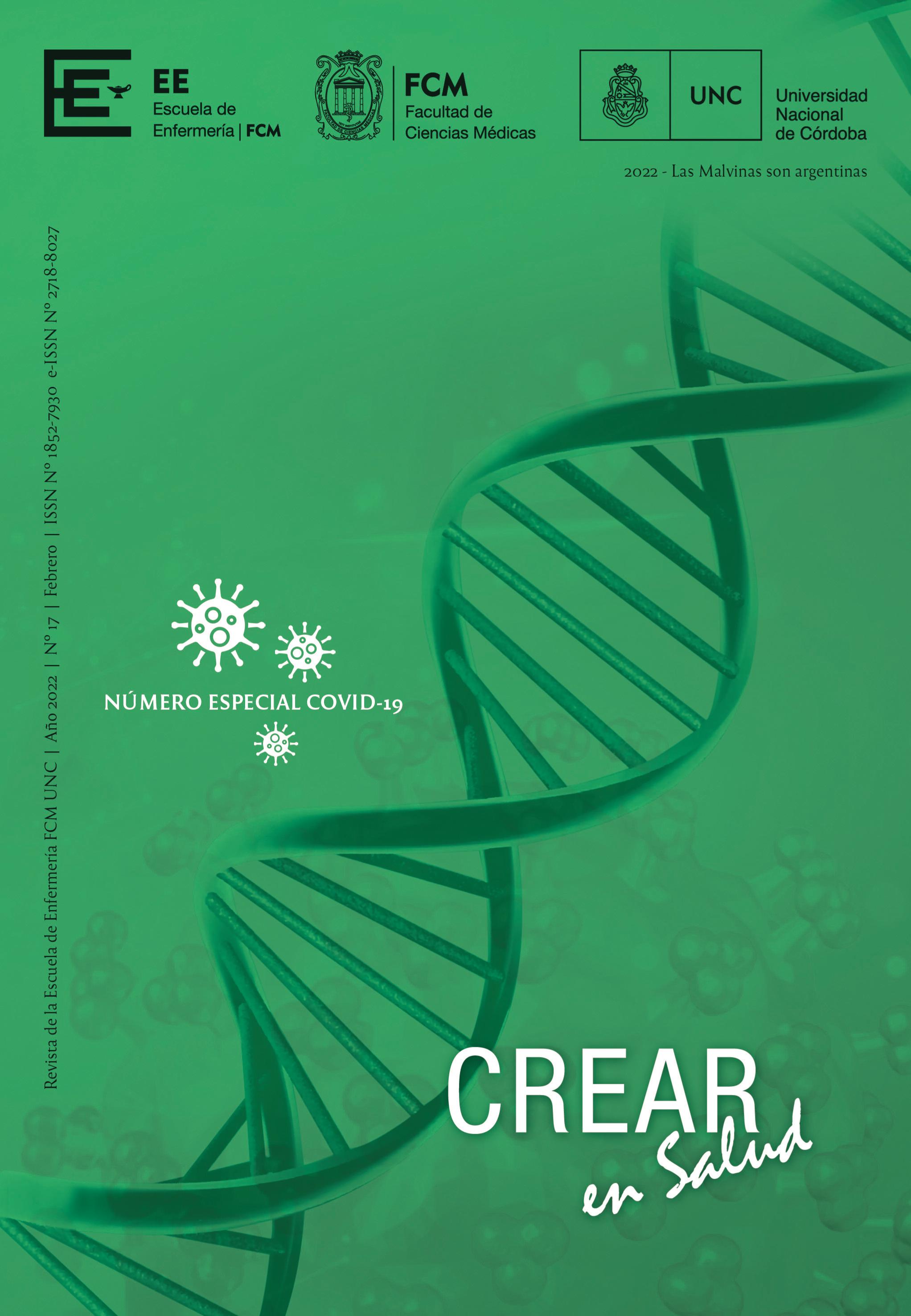FORMS OF ADAPTATION TO THE VIRTUAL TEACHING AND LEARNING PROCESS OF THE ADULT AND ELDERLY NURSING SUBJECT STUDENTS DURING THE COVID 19 PANDEMIC
Keywords:
virtuality, adaptation, teaching and learning process, pandemic, nursingAbstract
The National Executive Power established the confinement called ASPO(Social, Preventive and Mandatory Isolation) forcing to carry out pedagogical and social transformations that generated important changes in the educational context and ways of life in which the use of new technologies prevailed; physical spaces were replaced by virtual spaces; telematics became the main communication and information channel, teleworking and teleeducation were generated. The objective was to analyze the forms of adaptation to the teaching and learning process in relation to the course taken in virtual modality in students of the subject Adult and Elderly Nursing, during the period of social, preventive and compulsory isolation in the year 2020. Methodology: Study descriptive and cross-sectional, the student subjects were from the subject Adult and Elderly Nursing, the primary source; online structured survey technique. Results: 96.2% were able to adapt to the teaching and learning process in virtuality, presenting difficulties in the physical and pedagogical dimensions, such as technological resources and connectivity. Emphasizing the teaching predisposition in the exams, dictation of classes and tutorials. Discussion: The students accessed virtual teaching through mobile devices and sometimes, they did not have access. According to Diker (2021), less than half of households have Internet access with good signal quality and three out of ten do not have a fixed connection. The material was adequate, and despite the difficulties they were able to adapt to the platforms and the exams. According to what Chiecher, Donolo and Rinaudo (2008) expose, they indicate that it does not seem the same to organize in time to attend face-to-face classes set on certain days and times, than to do it to follow a distance course, in this sense, the moments of connection to the network are more freely determined by the student. Conclusions: The students achieved a good adaptation to the pedagogical, however, they presented difficulties in
physical aspects in the access and availability of technological equipment.
References
Basilio Robles, G. (2015). Didáctica en el uso de recursos informáticos.
https://es.slideshare.net/GilberBASILIO/didactica-en-el-uso-de-recursosinformaticos
Carneiro, R., Toscano, J. C., Díaz, T. coord. (2020). Los desafíos de las TIC para el cambio educativo. Metas Educativas 2021. Del texto: Organización de Estados Iberoamericanos para la Educación, la Ciencia y la Cultura (OEI). Madrid, España. Fundación Santillana.
https://www.oei.es/uploads/files/microsites/28/140/lastic2.pdf
Chiecher, A.; Donolo, D.; Rinaudo, M. C. (2008). Manejo del tiempo y el ambiente en una experiencia didáctica con instancias presenciales y virtuales. RED. Revista de Educación a Distancia, vol. VIII, núm. 20, septiembre, 2008. Universidad de Murcia, España. https://www.redalyc.org/
pdf/547/54702001.pdf
Diker, G. (2021). Estudiar es un derecho. En: Revista Orsai- área educación. Buenos Aires.
https://www.enorsai.com.ar/sociedad/34858-gabriela-diker--estudiar-es-underecho.html
Fainholc, B. (2004). La calidad en la educación a distancia continúa siendo un tema muy complejo. RED- Revista de Educación a Distancia, vol. III, núm. 12, diciembre, 2004. Universidad de Murcia. España.
https://www.redalyc.org/pdf/547/54701204.pdf
Herrera Batista, M. A. (2010). Consideraciones para el diseño didáctico de ambientes virtuales de aprendizaje: una propuesta basada en las funciones cognitivas del aprendizaje. Revista Iberoamericana de Educación (ISSN: 1681-5653).
https://rieoei.org/historico/deloslectores/1326Herrera.pdf
Herrera Batista, M. A. (2021). Las Nuevas Tecnologías en el aprendizaje constructivo. Universidad Autónoma Metropolitana (UAM), México. DOI: https://doi.org/10.35362/rie3433056
Pérez Porto, J y Merino, M. (2010). Estrategias de enseñanza investigaciones sobre didáctica en instituciones educativas de la ciudad de pasto. Primera edición, mayo de 2010. Colombia. http://biblioteca.clacso.edu.ar/Colombia/fceunisalle /20170117011106/Estrategias.pdf
Downloads
Published
Issue
Section
License

This work is licensed under a Creative Commons Attribution-NonCommercial 4.0 International License.



